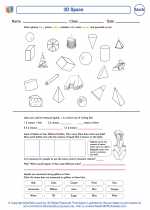Solids
In geometry, solids are three-dimensional shapes that have length, width, and height. They are also referred to as 3D shapes. Solids have faces, edges, and vertices. Some common examples of solids include cubes, prisms, pyramids, spheres, cylinders, and cones.
Properties of Solids
1. Faces: The flat surfaces of a solid are called faces. The number of faces varies depending on the type of solid.
2. Edges: The line segments where the faces of a solid meet are called edges. The number of edges also varies for different solids.
3. Vertices: The points where the edges of a solid meet are called vertices. The number of vertices differs for each type of solid.
Types of Solids
1. Cube: A cube is a solid with six square faces, 12 edges, and 8 vertices. All the faces of a cube are identical.
2. Prism: A prism is a solid with two parallel and congruent faces called bases. The other faces of a prism are parallelograms. The number of edges and vertices varies based on the type of prism.
3. Pyramid: A pyramid is a solid with a polygonal base and triangular faces that meet at a common vertex. The number of edges and vertices depends on the number of sides in the base polygon.
4. Sphere: A sphere is a perfectly round solid with no faces, edges, or vertices. It is defined by its radius, which is the distance from the center to any point on its surface.
5. Cylinder: A cylinder is a solid with two parallel circular bases and a curved surface. It has three edges and two vertices.
6. Cone: A cone is a solid with a circular base and a curved surface that tapers to a point called the apex. It has one edge and one vertex.
Understanding the properties and types of solids is important in geometry and is useful for various real-world applications.
.◂Math Worksheets and Study Guides Second Grade. Solids
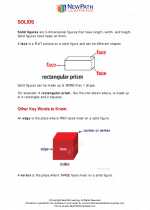
 Worksheet/Answer key
Worksheet/Answer key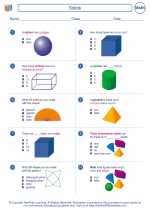
 Worksheet/Answer key
Worksheet/Answer key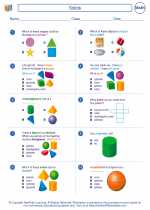
 Worksheet/Answer key
Worksheet/Answer key
 Worksheet/Answer key
Worksheet/Answer key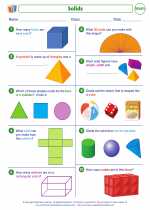
 Worksheet/Answer key
Worksheet/Answer key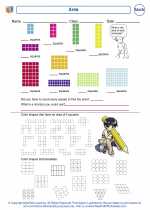
 Worksheet/Answer key
Worksheet/Answer key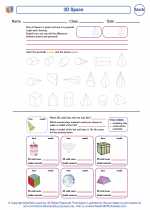
 Worksheet/Answer key
Worksheet/Answer key